#aircraft enthusiasts
Explore tagged Tumblr posts
Text
youtube
#youtube#militarytraining#aircraft love#Travis Air Force Base#Travis AFB#air refueling#aviation enthusiasts#KC-10 Extender#aviation photography#farewell flight#Air Force#tanker aircraft#aircraft retirement#airshow#defense forces#USAF#aviation history#military aircraft#military aviation#flight demonstration#military operations#KC-10#aircraft enthusiasts#aviation#air force bases#farewell#air force#aerial refueling#air show#air tanker
1 note
·
View note
Text

The F-22 Raptor is a masterpiece of modern aviation, renowned for its stealth, speed, and unmatched aerial combat capabilities. Celebrating cutting-edge technology and air superiority, this design on Redbubble is perfect for aviation enthusiasts!
#F22Raptor, #StealthFighter, #FighterJet, #MilitaryAviation, #USAF
Gift on F22 Raptor USAF // 1
Gift on F22 Raptor USAF // 2
Gift on F22 Raptor USAF // 3
Gift on F22 Raptor USAF // 4
#F22 Raptor#Stealth Fighter#Fighter Jet#Military Aviation#Aviation Technology#Air Superiority#Aviation Enthusiast#Aerial Combat#Jet Fighter#Advanced Aircraft#Air Force#Supersonic Flight#Aviation Lovers#Lockheed Martin#Pilot Life#usaf#usafashion#f22#fighter#pilot#aviation
187 notes
·
View notes
Text
youtube
#Youtube#p8i Poseidon#p8 Poseidon#maritime patrol aircraft#aviation technology#aviation enthusiast#aviation#military technology#anti submarine weapon#india#indian navy#indian army#indian airforce#military#defense#defence#warfare
4 notes
·
View notes
Text
The Bell UH-1H Iroquois, known as the "Huey," is a legendary helicopter celebrated for its versatility, reliability, and iconic role in military and civilian missions. Explore this design on Redbubble!
Visit product >>>>
#Bell UH-1H#Huey#Helicopter#Military Aviation#Aviation History#Versatility#Aviation Enthusiast#Troop Transport#Medical Evacuation#Iconic Aircraft#Vietnam War#Combat Helicopter#Helicopter Pilot#Aviation Lovers#Bell Helicopter#Pilot#Military#redbubble
3 notes
·
View notes
Text
been reading an SCP article related to the setting of the new tactical horror game that takes place in the setting (SCP 5K) and


buddy did you really think nobody would notice that you were using an overlay template for AC-130 gunnery footage?
(i know it's not something related to camera lenses bc the AC-130 carries a 25mm Gatling cannon, a 40mm autocannon, and a 105mm short howitzer)
#toaster thoughts#scp fandom#scp 5k#scp-7555#honestly they probably weren't counting on a combat aircraft enthusiast#reading a creative writing project involving cosmic horror#but that's what ya get when you link it to an authenticity-focused tactical shooter
8 notes
·
View notes
Text



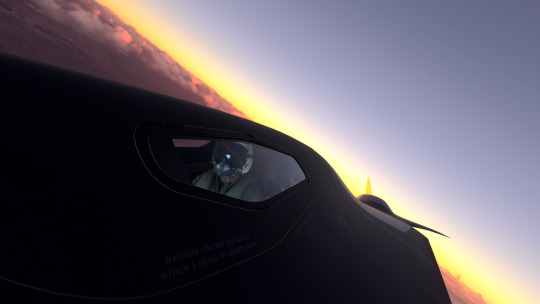
#aviation#militaryaviationlovers#jets#jet aircraft#fighter jet#fighter jets#microsoft flight simulator#Microsoft flight simulator 2020#landscape photography#Screenshots#photography#Aviation enthusiasm#Aviation enthusiastic#darkstar#top gun maverick#Top gun
6 notes
·
View notes
Text

#fighter jet#aviation apparel#pilot shirt#men's v-neck#aircraft tee#aviation enthusiast#adventure wear#casual style#pilot fashion#aviation gear#aircraft logo#aviation clothing#high-flying fashion
0 notes
Text
Everything Needs to Know About Airplane Coffee Mugs For Pilots
Even the choice of coffee mug may be important in the aviation industry, where accuracy and dependability are critical. To keep awake and focused, pilots, who often fly through lengthy flights and unexpected weather, depend on their caffeine fix. Presenting the aviation coffee mug: a speciality item made to satisfy pilots' particular requirements while guaranteeing functioning, safety, and comfort at 35,000 feet.
Substances: An airline coffee mugs substance is very important. These mugs are usually made of sturdy materials like aerospace-grade aluminium or stainless steel. These materials maintain liquids at the proper temperature for long periods in addition to withstanding the rigours of flight. They are very lightweight, which makes handling them easier in turbulent conditions.
Controlling Temperature and Insulation: In the high-altitude atmosphere of an airplane, it becomes imperative to maintain the temperature of liquids. Coffee mugs designed for airplane use include cutting-edge insulation technology to maintain the ideal temperature for beverages. Vacuum insulation and double walls are standard, which effectively keeps the contents' temperature stable for hours.
Design to Stop Leaks: A leak-proof coffee cup is vital in the cockpit, where every action has to be precise and deliberate. Pilots want confidence that turbulence or abrupt movements won't cause their drinks to spill. A lot of coffee mugs on airplanes have lids that lock, which prevents spills from happening and gives passengers piece of mind while flying.
Comfortable Design: Ergonomic designs that reduce strain and fatigue are necessary for prolonged hours spent in the cockpit. Coffee mugs for use on airplanes often include non-slip grips and cosy handles, which help pilots have a firm grasp even in choppy situations. The mug's dimensions and form were also carefully thought out to ensure that it would fit perfectly into cockpit cup holders and storage spaces.
Harmony with the Aircraft Setting: Coffee mugs designed for airplanes are made to survive in the special conditions found inside an aircraft. They are designed to be resistant to vibration, pressure fluctuations, and altitude changes without sacrificing performance or usefulness. Furthermore, some mugs work with in-flight beverage systems, making it simple for pilots to restock on beverages.
Sturdiness and Lifespan: Dependability is a non-negotiable for pilots. A coffee mug for an aircraft has to be long-lasting, and able to survive repeated usage and the rigors of aviation settings. These mugs are made with high-quality materials and precise engineering to guarantee that they last and become dependable travel companions for many trips.
Individuality and Fashion: Although utility is paramount, pilots like flair and individuality in their coffee mugs as well. Pilots may engrave their name, aircraft registration number, or favourite aviation phrases into their mugs thanks to the customized choices offered by many manufacturers. Furthermore, a variety of hues and patterns accommodate particular tastes and give the cockpit a unique touch.
Safety Points to Remember: In aviation, safety comes first and is of utmost importance. Pilot coffee mugs are put through a lot of testing to make sure they are reliable and safe according to industry standards. This involves evaluations of the structure, the materials used, and any possible risks like loose parts or sharp edges. Pilots may feel secure knowing that their coffee cup of choice complies with tight safety regulations, giving them peace of mind while flying.
Upkeep and Attention: An airline coffee cup has to be properly maintained and cared for to last longer. For ease of use, the majority of types are dishwasher safe; nevertheless, hand cleaning is often advised to maintain the integrity of the sealing and insulating systems. Examining the mug's parts regularly, such as the lids and seals, makes it easier to see any wear or damage that might affect its functionality.
In summary:
Every little detail counts in the hectic world of flight, even a coffee cup. The selection of an aircraft coffee cup is an important decision that should not be made hastily since pilots depend on these specialized devices to keep them fuelled and focused throughout lengthy flights. Standing tall on the trifecta of robustness, use, and compatibility, these mugs are indispensable flying companions. Dependable coffee mugs for airplanes guarantee that pilots keep reenergized and prepared for any obstacles that may arise, regardless of whether they are flying over calm waters or through high winds.
Keywords tag: aircraft mugs, aircraft coffee mugs, airplane coffee mug, best gifts for pilots, gifts for plane enthusiasts, top gifts for pilots, gifts for helicopter pilots, airplane mug, gifts for airplane enthusiasts, pilot coffee mug
Source URL : https://medium.com/@aeromugsusa/everything-needs-to-know-about-airplane-coffee-mugs-for-pilots-eeb28889c3d0
#aircraft mugs#aircraft coffee mugs#airplane coffee mug#best gifts for pilots#gifts for plane enthusiasts#top gifts for pilots#gifts for helicopter pilots#airplane mug#gifts for airplane enthusiasts#pilot coffee mug
0 notes
Note
*Flirting* So what IS your favorite WWII Light Bomber?
douglas a26 invader :3 most of my favourite planes are douglas actually. my favourite plane of all time is the a20 havoc. when i look at that plane i become sick in the head it's so beautiful. if i can count a hawker hart as wwii (i mean like. i can but they were borderline obsolete by then) that is another favourite light bomber of mine. i have a whole shelf of books on military aircraft if you wanted me to show you some of my favourites tucks hair behind ear flirtily. anyway
#really hard finding books that are just on bombers. its rough out here for bomber fans#fighter plane enthusiasts are the spoiled youngest child of aircraft enjoyers#aircraft
1 note
·
View note
Text
Among car enthusiasts of a certain persuasion, there exists a yearning that cannot be satisfied by regular automakers. The hoi polloi are perfectly happy with their normal, pedestrian automobiles. The elites opt for penis-shaped zoom-zooms that cost more than a house. Those of us in the middle, who have an eternal love for going very fast for very little money, are abandoned. And as we all know, being in the self-described middle is the same thing as being morally correct at all times.
Back in the 50s, people really wanted to go fast for no money. It's what started the whole world of hot rodding. And they had lots of good options, thanks to the government suddenly having a ton of warplanes that weren't currently engaged in a war. Cool plane superchargers, engines, belly tanks – anything that weird nerds could get their hands on – got shoved into cars in the quest to go fast. And automakers were run by those weird nerds, back then.
Sure, a lot of them were putatively "run" by big-dollar, humanity-crushing fascists, but the real fun, in the research and development divisions? That was happening with the same hot rodder nutjobs who would go down to the beach after work and do skids in a car mostly made out of a bathtub, until the cops showed up. And in the late 50s, what those very same nutjobs were excited about were turbines.
See, turbine engines were getting exciting then. It was the jet age. Clean, efficient, very loud, screaming jets. Not inefficient, old clangy pistons with their oiled bearings and pitiful triple-digit horsepower. No, it was time to go fast, and so they dutifully started cramming turbines into street cars. Did it make sense? No. Were any of these cars even close to being practical? Absolutely not. Was it completely bad-ass? Yes.
Unfortunately, it was at this time that the nascent development of "management science" began to metastasize in the Western world. A lot of bosses came down and saw a screaming, shrieking demon burning nineteen litres of gasoline per minute, bolted loosely into a Ford Deluxe Coupe, and they asked: how many cupholders this got? Not having a sufficient answer that didn't start with "fuck you," these same bosses then began dismantling the apparatus that held a promise of a glorious, high-pitched-whining future of thirty-thousand-rpm engines.
There is still hope. For instance, things containing turbines get crashed all the time. Once the FAA is done looking at them to figure out what they fucked up (usually: aircraft contacted the earth too soon,) they don't really pay too much attention to what happens to the carcass. If you're quick, you can cut through the fence and get ahold of your very own helicopter turbine with which to start the project. And what do you use to slice through that fence and retrieve your futurist prize? A thirty-thousand-rpm battery-operated cut-off wheel, of course. Thanks, weird nerds.
728 notes
·
View notes
Text
Tailspin Tapestries: The Colorful Faces of WWII Aircraft 🃏
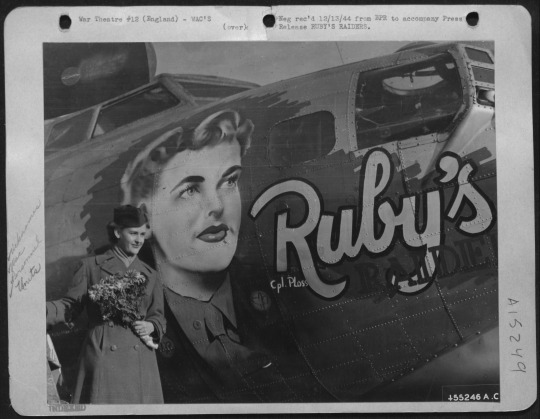


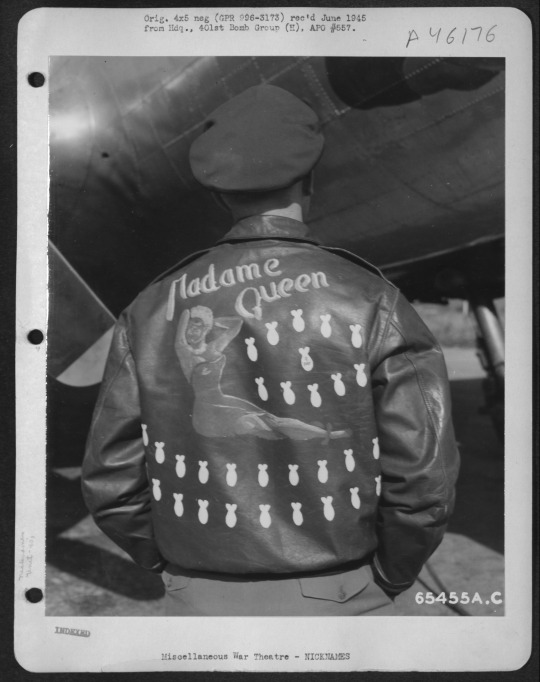
Nose art, the decorative painting or design on the fuselage of military aircraft, has a storied history that peaked during World War II. This vibrant, often cheeky artwork served as a morale booster for the crew, adding a personal touch to the grimness of war and providing a sentimental tie to the home they were fighting to protect. The practice traces its origins to Italian and German pilots in World War I, but it was during World War II that American airmen embraced this form of expression with unparalleled creativity.




World War II represented the golden age of nose art, with American crews stationed in Europe and the Pacific leading in creativity. Artworks ranged from ferocious animals and cartoon characters to pin-up girls and patriotic symbols, each with a unique name that reflected the aircraft's character, the crew's aspirations, or an inside joke among the squadron. Names like "Memphis Belle," "Enola Gay," and "Sack Time" became as legendary as the aircraft themselves, symbolizing the spirit of the crew and their mission.




Nose art was crucial to boosting morale among crew members, providing a sense of individuality and ownership over their aircraft in an otherwise regimented and dehumanizing environment. This artwork fostered an emotional attachment to their planes, with each piece a vivid manifestation of the crew's bond. It represented a piece of home and personality in foreign skies, a reminder of what they fought for and the camaraderie that sustained them.
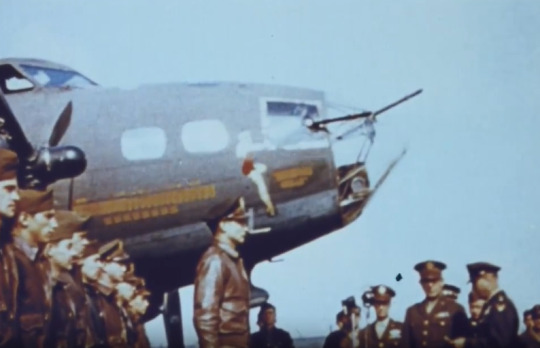

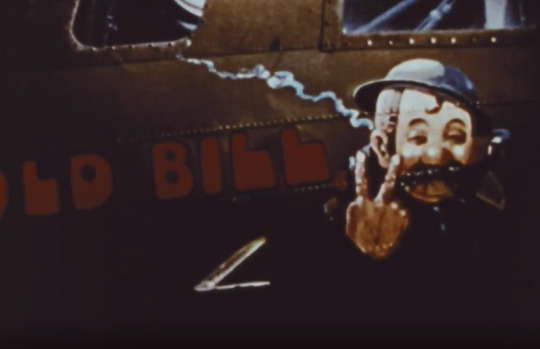
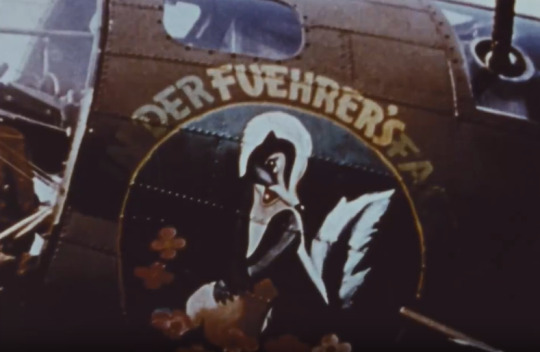

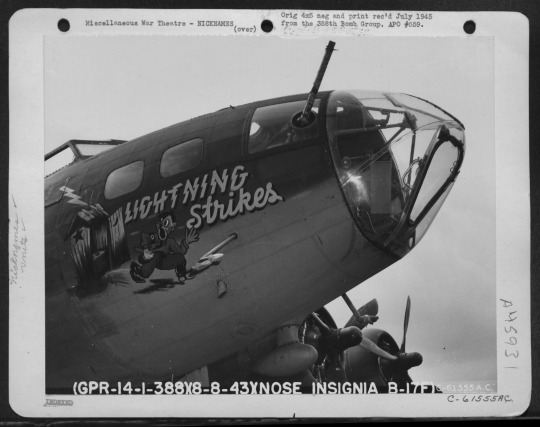

The subject matter of nose art varied widely, reflecting diverse personalities within the crews. Cartoons and comic characters like Donald Duck and Bugs Bunny were favorites for their humor and relatability. Artwork also featured fierce sharks, tigers, and eagles, symbolizing the aircraft and crew's power and aggression.
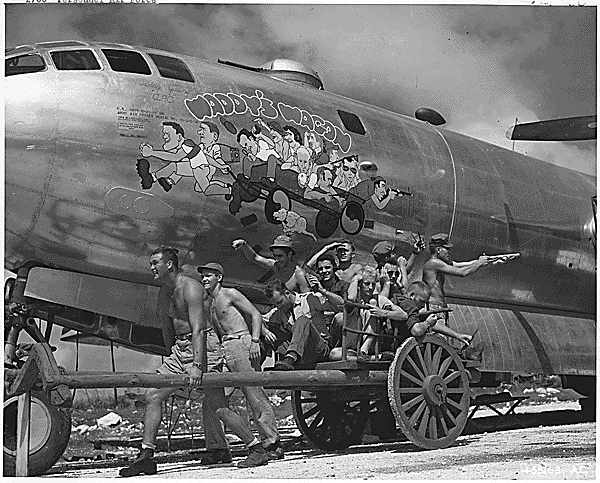

Many nose art pieces were painted by the crew members themselves, though some squads had designated artists. Individuals like Don Allen, who painted nearly 100 pieces of nose art, were celebrated for their contributions. Using whatever materials were at hand, these artists created masterpieces under challenging conditions, showcasing remarkable ingenuity and talent.

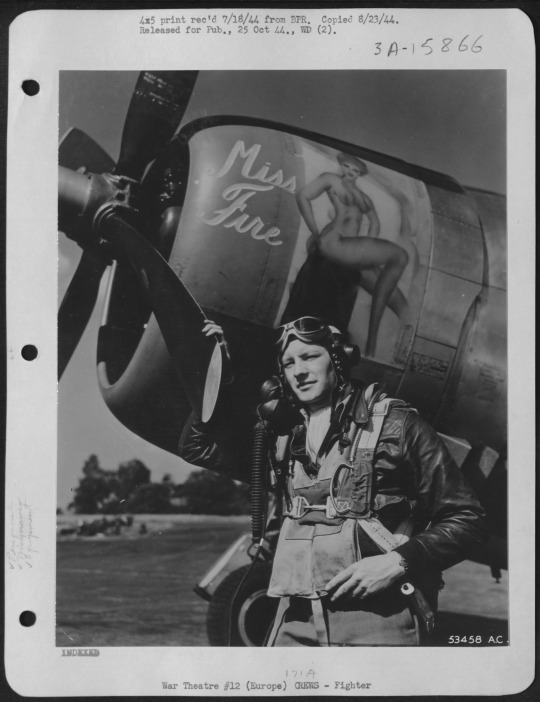
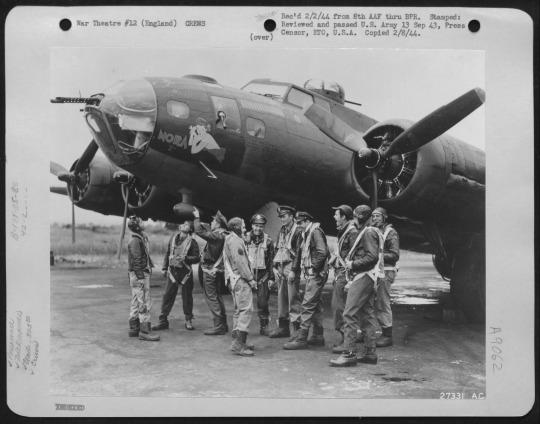
The practice of nose art declined after World War II, largely due to stricter military regulations and the evolving nature of warfare. However, its legacy endures, captivating historians, veterans, and enthusiasts. World War II nose art remains a powerful reminder of the human element amidst war's machinery, a colorful testament to the resilience, creativity, and spirit of those who served.
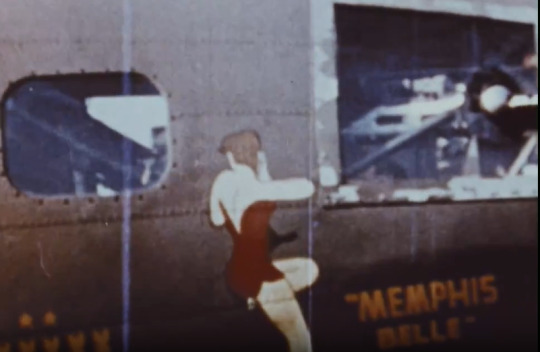




The National Archives holds a treasure trove of photographs featuring this iconic nose art, often discovered in ordinary crew photos where the art itself isn't the primary focus of the image. This creates a fascinating treasure hunt for enthusiasts and researchers alike, offering glimpses into the past where this artwork accompanies stories of bravery, camaraderie, and the personal touches that made these aircraft more than just machines of war.
More resources on the National Archives website and Catalog:
https://nara.getarchive.net/topics/nose+art https://www.archives.gov/research/military/ww2/photos
582 notes
·
View notes
Text
youtube
#youtube#militarytraining#Neptune Strike#Marine Medium Tiltrotor Squadron#defense operations#naval exercises#maritime strike#aviation enthusiasts.#USS Wasp#US Navy#aircraft carrier#military training#AV-8B Harrier#amphibious assault ship#Mediterranean Sea#Marine Corps#VMM 365#amphibious operations#air support#sea power#NEPTUNE STRIKE#combat readiness#war games#aviation#Wasp#naval operations#amphibious assault#Harrier Jets
7 notes
·
View notes
Text
Blue Skies and Green Eyes (Jake Seresin x Reader)

A/N: so I decided to just write an air show meet cute for Jake, Bradley and Bob because, even with a poll, how could I ever choose? So, here's the first of three, I guess? 😅
pairing: Jake Seresin x reader
content/warnings: pure fluff, air show inaccuracies because the last time I went to one I was 9, and it was in a cornfield, reader has a named niece and nephew, no physical description of reader given other than an allusion to them being tall.
word count: 2.1k

On the sun-soaked beach, your niece and nephew climbed over one another eagerly on the blanket you had carefully arranged, vying for the best spot to witness the spectacle unfolding overhead. The air show, a cherished tradition passed down from your father to you and your brother, had become an annual pilgrimage for your family. Determined to keep the legacy alive, you eagerly took charge of the tradition when your brother couldn't make it to your nephew's first air show.
For the past seven years, this had been your unique tradition with them. As the jets roared to life in the sky, the kids engaged in a lively dispute, each competing for an unobstructed view of the aerial acrobatics. Your brow furrowed as their bickering escalated, prompting an eye roll from you. Seizing the opportunity to diffuse the tension, you chuckled and settled between them, effectively creating a barrier that halted their squabble.
“Hey!” They both protested, shaking their heads in dismay.
“If it's the only way to prevent a full-blown war between you two, then I'm planting myself right here,” you declared with a playful smirk.
Mia, your spirited niece, responded with a pout and crossed arms, while Aiden, her older brother, countered by sticking his tongue out at her, a mischievous grin adorning his face as he comfortably claimed his spot beside you.
“Aiden,” you warned, catching his silent final shot at his sister out of the corner of your eye.
“Sorry.”
A warm smile adorned your face as you, along with the children, gazed skyward, captivated by the mesmerizing display of aircraft maneuvering through a series of intricate twists, turns, and loops. Aiden erupted in cheers and enthusiastic whistles, his excitement bubbling over as a FA-18 Super Hornet executed a flawless barrel roll high above. Engrossed in the spectacle, he fervently waved at the aircraft above him, a hopeful gesture that the pilot might catch a glimpse and reciprocate in some way. Beside him, Mia eagerly pointed upward, her eyes widening in sheer wonder as the plane effortlessly navigated a knife-edge flight, leaving her with an awestruck expression that mirrored the spectacle unfolding before her.
As the airshow continued, the sky became a canvas for more daring aerobatics. Another set of aircraft roared onto the scene, executing synchronized maneuvers that left trails of smoke swirling against the azure backdrop. Aiden and Mia's attention darted from one spectacle to another, their faces alive with awe and exhilaration. You couldn't help but share in their enthusiasm, reveling in the joy of witnessing these aerial feats with the same awestruck gaze you had as a child yourself, completely fascinated by the skill executed in every move.
Suddenly, a squadron of jets soared in tight formation, their wings almost touching as they painted the sky with precision. The deafening roar of engines filled the air as the pilots skillfully executed a breathtaking sequence of loops and rolls, creating a symphony of motion that left the onlookers breathless.
Aiden, his eyes glued to the spectacle, whispered in amazement, "I want to be a pilot one day, just like them!"
Mia, equally captivated, nodded in agreement, her imagination ignited by the incredible display unfolding above.
“Do you think we could meet them?!” Aiden asked excitedly as he turned his attention to you.
“I don’t know, honey, they’re probably really busy,” you explained with a nod of your head, knowing that the chances were unlikely to be in your favour.
“Can we try?! Please?”
You looked at Aiden’s pleading face, and then to his sister, who had decided to match his facial expressions, their innocent faces making nearly impossible for you to say no to.
“Fine, we can try. But I’m not making any promises, guys. You know, they’re really busy, and they’re actual military pilots, they’ve got lots of stuff to do.”
The children both cheered the moment you agreed to their request, and you could tell that the last portion of your reply was falling on deaf ears. You huffed a mock dramatic sigh as you squeezed both of them into a tight hug, laughing softly.
After the airshow had concluded, all Mia and Aiden could talk about was how you were taking them to try and meet some of the pilots. You felt an anxious knot in the pit of your stomach, nervous that you’d be unable to fulfill their wish. Holding both of the children’s hands, you approached the airfield fence where the pilots could be seen chatting after the show, their planes merely feet away from where you stood. A group of pilots who appeared to be in their early to late 30s stood together, laughing cordially as they spoke. One of the pilots, a tall blonde with an air of pure, unbridled confidence to his stance took notice of you as you stood with Mia and Aiden. He waved his hand to say hello, and Aiden practically squealed in excitement, jumping up and down on the spot.
The blonde pilot raised his hand to his colleagues, appearing to excuse himself for a moment. Suddenly, you noticed Aiden’s attention turn to the side. You and Mia followed his gaze, noticing that the blonde pilot was now on your side of the fence that separated the three of you from the military aircraft in the field.
“Hi, did y’all enjoy the airshow?” The aviator asked, flashing a charming smile at you as he lifted his sunglasses to rest on top of his perfectly coiffed hair.
Aiden nodded his head in a stunned silence, starstruck by the man standing before him. The allure of the charismatic Navy pilot was undeniable. His tall, athletic frame exuded confidence, and his sun-kissed skin bore witness to countless hours spent in the cockpit under the Californian sun. Those stunning pale green eyes seemed to hold the vastness of the sky, hinting at the adventures he'd encountered soaring through the clouds. Jake's charming smile had a magnetic quality, drawing you in with its warmth and openness. The subtle southern drawl in his voice added an extra layer of appeal, creating a melody that resonated with the thrill of the airshow and the laid-back atmosphere of the beach.
“We did,” you said after a moment’s hesitation, trying to not appear like a lovestruck teenager as your eyes briefly met with his.
The pilot knelt down to Aiden and Mia’s level, smiling at them both with the same charming grin he gave you a moment ago.
“Do you kids like planes?”
“I do!” Aiden and Mia both responded in unison.
“That’s awesome to hear! My name is Jake, I fly planes for the US Navy, see that one there?” He beamed proudly as he gestured towards one of the grey aircraft parked in the distance, “That’s my plane. All of our planes have our names on them so we know who’s is who’s, and our callsigns, so we can just use one word to talk to each other on the radio.”
“What’s your callsign?” Aiden asked, tilting his head as he looked at Jake.
“Hangman. Like the game, where you have to guess letters to find out what the secret word is, do you know that one?”
Aiden nodded his head and grinned. You couldn’t help but admire how patient and friendly Jake was towards Aiden and Mia, taking care to answer their eager questions with thorough answers and explanations, leaving nothing unanswered. As he spoke passionately about his experiences as a Top Gun graduate stationed at Miramar, you couldn't help but be captivated by the combination of his professionalism, adventurous spirit, and undeniable charm.
“Do you have a rank?” Aiden quizzed, tilting his head.
“Of course! Lieutenant Jake Seresin, US Navy,” Jake grinned, “And what’s your name, little guy?”
“I’m Aiden, and this is my sister, Mia,” Aiden explained, before introducing you as somewhat of an afterthought due to his excitement.
Jake looked up at you, a genuine smile forming on his lips. His green eyes stayed on you, and you could feel a sense of curiosity in his gaze. He turned his attention back to your niece and nephew, his hand resting on his knee as he looked at them both.
“Nice to meet y’all! Maybe, if your aunt says it’s ok, you guys could come back here one weekend, and I could give y’all a tour of the planes, let you meet some other pilots? Sound fun?”
Jake's offer had your niece and nephew practically buzzing with excitement. Their pleading eyes and enthusiastic pleas tugged at your heartstrings, mirroring the eagerness that now danced in your own eyes. You exchanged a glance with Jake, whose genuine smile hinted at an underlying warmth.
"Well, Lieutenant Seresin," you responded with a playful grin, "it seems like you've just won yourself two eager co-pilots for that future tour of yours."
The prospect of spending more time with Jake and experiencing the world of naval aviation up close had ignited a spark of anticipation within you. As he continued to chat with Aiden and Mia, effortlessly captivating them with tales of high-flying adventures, you couldn't help but appreciate the sincerity in his demeanor. The beach, once a stage for the breathtaking airshow, now held the promise of more extraordinary moments to come.
With a subtle twinkle in his pale green eyes, he stood up and straightened his posture to his full height, easily taller than you by more than a few inches. He turned his attention back to you, a mischievous smile playing on his lips.
"You know," he began, his pale green eyes locking onto yours, "meeting someone as captivating as you wasn't part of the airshow program today. Consider me pleasantly surprised."
A warm flush crept across your cheeks as you chuckled at his smooth remark. Jake continued, his voice carrying the lilt of his unmistakable southern drawl, "I was thinking, maybe when I'm not up in the skies, we could grab a coffee or a drink. Talk about something other than planes and maneuvers, you know?"
The subtle invitation hung in the air, and you found yourself nodding, unable to suppress a growing smile.
"I'd like that," you replied, your eyes meeting his with a shared sense of anticipation.
“How about you share your number with me? That way, we can figure out when to meet up again. And it saves you from having to try and track me down on a Naval base."
Feeling a mix of excitement and anticipation, you retrieved your phone, fingers tapping out the digits as you exchanged contact information. Jake reciprocated, a grin playing on his lips as he entered your number into his phone. The exchange felt like a subtle promise, a digital tether that connected two individuals eager to navigate beyond the boundaries of the beach encounter.
With phones back in pockets, there was a shared acknowledgment that this exchange wasn't just about convenience but a mutual interest in seeing where this connection could lead. As the warm sunlight cascaded down over you, your niece and nephew’s muffled giggles and whispers in the air, and the promise of future messages and potential meetings lingering, it left you both with a sense of excitement for what lay ahead.
"Well, it looks like it's time for me and these two little aviators to head out," you remarked with a playful glint in your eyes.
The prospect of saying goodbye brought a hint of reluctance to the moment. With a gentle nudge, you encouraged Mia and Aiden to express their gratitude.
"Come on, you two," you said with a smile, "let's thank Lieutenant Seresin for the amazing day." The kids, still brimming with excitement, turned to Jake, expressions eager.
With genuine appreciation in their voices, Mia and Aiden chorused their thanks.
"Thank you, Lieutenant Seresin!"
Jake chuckled warmly, crouching down to their eye level. "Y’all can just call me Jake, you know. No need for all the formality, I’m only Lieutenant Seresin if my CO is around." He winked at them, his easygoing nature resonating with their youthful enthusiasm.
As the kids bid their farewells, Jake turned to you, his gaze holding a hint of something more. "Until next time, I suppose," he said, his tone carrying a mix of sincerity and anticipation.
You smiled, reciprocating the sentiment. "Absolutely. Until next time, Jake."
With a final exchange of glances and well wishes, you, Mia, and Aiden left the beach, the echoes of the airshow and the promising connection with Jake lingering in the warm California breeze. Armed with plans to coordinate with the kids' parents for a tour with Jake, and plans to schedule a date with him, you hoped this encounter marked the beginning of a connection that extended beyond the sandy shores of Coronado Beach.
#jake hangman seresin#jake hangman seresin x reader#hangman x reader#jake seresin x reader#jake seresin fic#hangman fic#jake hangman seresin fic#hangman#top gun: maverick fic#top gun maverick fic#jake seresin#jake seresin x f!reader#jake seresin x gn!reader#jake seresin fanfiction#jake hangman seresin imagine#jake seresin fluff#jake hangman seresin fluff#lt. jake seresin x reader#lt. jake seresin x you#lt. jake seresin
642 notes
·
View notes
Text
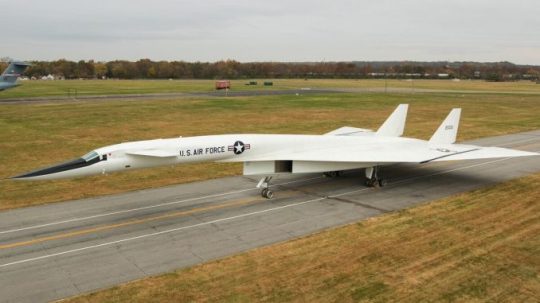
Celebrating 60 Years of the XB-70 Valkyrie Mach 3 Super Bomber
September 16, 2024 Military Aviation
XB-70 60th anniversary
The lone XB-70 Valkyrie is photographed as it is moved to a new building at the Museum of the United States Air Force located at Wright-Patterson Air Force Base, Ohio, on Oct. 27, 2015. Beginning in the late 1950s and continuing through the mid-1960s, tests were conducted at Arnold Air Force Base, Tenn., headquarters of Arnold Engineering Development Complex, in support of the XB-70 program. The now-retired aircraft made its first flight on Sept. 21, 1964. (U.S. Air Force photo by Will Haas)
The experimental legacy of the iconic XB-70 Valkyrie, which made its first flight on Sept. 21, 1964.
An article published on the U.S. Air Force website commemorates the 60th anniversary of the first flight of the legendary XB-70 Valkyrie, a supersonic bomber that captured the imagination of aviation enthusiasts and engineers alike. Known for its sleek and futuristic design, the XB-70 remains a symbol of the experimental and ambitious spirit of Cold War-era aircraft development. Despite only two prototypes ever being built, the aircraft has left an indelible mark on military aviation history.
The XB-70 Valkyrie was originally conceived in the 1950s as a high-speed, high-altitude bomber for the U.S. Air Force Strategic Air Command. At a time when technological advancements were rapidly accelerating, the U.S. Air Force sought a bomber capable of flying faster and higher than the B-52 Stratofortress, its workhorse of the era (as well as the backbone of the strategic bomber fleet today and for some more decades in the future…).
With a planned cruise speed of Mach 3 and an operating altitude of 70,000 feet, the XB-70 promised to outpace and outmaneuver Soviet defenses, which were a growing concern during the Cold War.
One of the most remarkable features of the XB-70 was its ability to “ride” its own shockwave, a design innovation that allowed it to maintain stability and performance at supersonic speeds. The Valkyrie’s iconic delta wing, combined with six powerful jet engines, gave it an exotic and striking appearance, making it one of the most visually distinctive aircraft ever built. Its outer wing panels were hinged, allowing them to be lowered during flight to optimize the aerodynamic performance at high speeds.
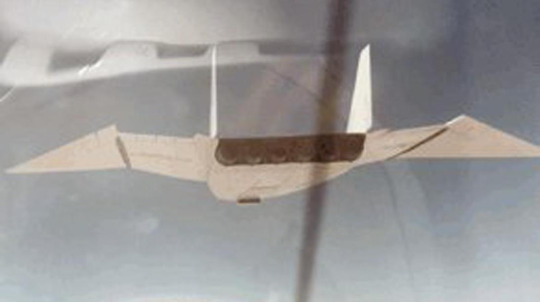
The XB-70 looks like an alien spacecraft from this angle. (Image credit: USAF)
The article highlights the crucial role played by Arnold Engineering Development Complex (AEDC) in the development of the XB-70.
The testing of the Valkyrie’s engines, aerodynamics, and other key components began at Arnold Air Force Base in the late 1950s, well before the first prototype took shape. The AEDC’s facilities were instrumental in pushing the boundaries of what was possible in aviation at the time. One of the earliest tests involved the air-breathing engine nozzles proposed for the XB-70 in March 1958. This was followed by extensive wind tunnel testing of scale models of the Valkyrie, where the aerodynamic characteristics of bombs dropped from the aircraft were also studied.
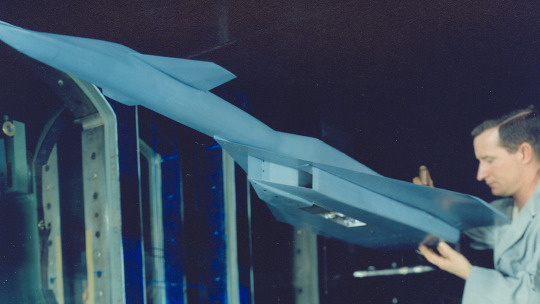
A technician makes adjustments to a scale model of the XB-70 Valkyrie before aerodynamic characteristics related to the aircraft are evaluated in Tunnel A of the von Kármán Gas Dynamics Facility at Arnold Air Force Base, Tenn., headquarters of Arnold Engineering Development Complex, in 1959. Beginning in the late 1950s and continuing through the mid-1960s, tests were conducted at Arnold Air Force Base, Tenn., headquarters of Arnold Engineering Development Complex, in support of the XB-70 program. Only two Valkyries were built, with only one of the pair remaining. The now-retired aircraft made its first flight on Sept. 21, 1964. (U.S. Air Force photo)
Development continued into the early 1960s, with the YJ93 turbojet engines, designed specifically for the XB-70, undergoing rigorous testing at AEDC. These engines were critical to the Valkyrie’s ability to reach and maintain supersonic speeds. However, in 1961, before the first prototype was even completed, the bomber program was canceled due to budget constraints and concerns over the bomber’s vulnerability to Soviet surface-to-air missiles, which had rapidly advanced in capability.
Although the XB-70 bomber program was terminated, the Valkyrie found new life as a research aircraft.
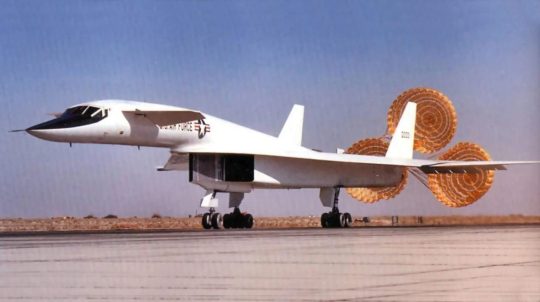
Three drag chutes were needed to slow down the landing roll of the XB-70. (Image credit: Reddit edit The Aviationist)
The U.S. Air Force recognized the potential of the aircraft to serve in aerodynamics and propulsion research, particularly in the study of large supersonic aircraft. Consequently, two XB-70 prototypes were completed, and testing continued, including at AEDC, where a scale version of the XB-70 inlet, paired with a full-scale YJ93 engine, was tested in August 1962.
XB-70A number 1 (62-001) made its first flight from Palmdale to Edwards Air Force Base, CA, on Sept. 21, 1964. The second XB-70A (62-207) made its first flight on Jul. 17, 1965. The latter differed from the first prototype for being built with an added 5 degrees of dihedral on the wings as suggested by the NASA Ames Research Center, Moffett Field, CA, wind-tunnel studies.
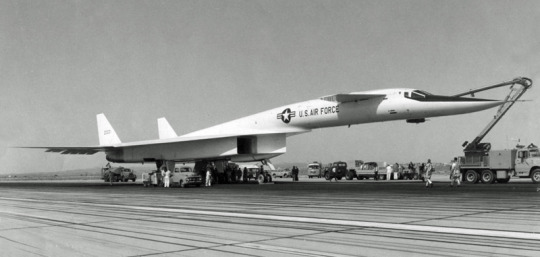
North American XB-70A Valkyrie on the taxiway with a cherry picker. Photo taken Sept. 21, 1964, the day of the first flight. Note: the left main landing gear brakes locked during the landing causing two tires to blow. (U.S. Air Force photo)
While the 62-001 made only one flight above Mach 3, because of poor directional stability experienced past Mach 2.5, the second XB-70, achieved Mach 3 for the first time on Jan. 3, 1966 and successfully completed a total of nine Mach 3 flights by June on the same year.
However, the Valkyrie program suffered a devastating setback in June 1966 when the second prototype was destroyed in a midair collision with an F-104N Starfighter during a photoshoot. This tragic accident resulted in the loss of key personnel and diminished the future prospects of the Valkyrie.
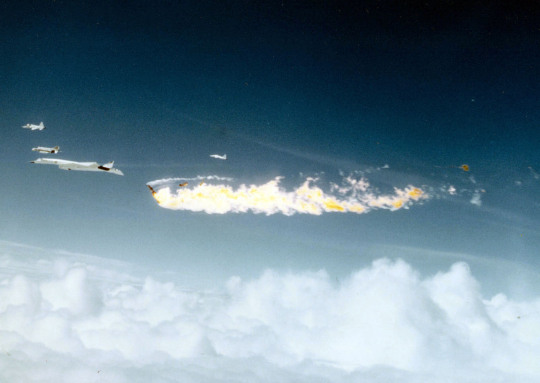
North American XB-70A Valkyrie just after collision. Note the F-104 is at the forward edge of the fireball and most of both XB-70A vertical stabilizers are gone. (U.S. Air Force photo)
Despite this setback, the remaining XB-70 continued to serve as a valuable research platform. In 1967, the U.S. Air Force transferred the aircraft to NASA, where it was used in support of the National Supersonic Transport (SST) program. NASA employed the XB-70 to investigate supersonic flight operations, but the SST program was eventually canceled in 1971, marking the end of America’s efforts to develop a commercial supersonic airliner.
The XB-70 Valkyrie’s final flight took place on Feb. 4, 1969, when it was flown to Wright-Patterson Air Force Base in Ohio. There, the aircraft was placed on display at what is now the National Museum of the United States Air Force, where it remains a testament to the audacious engineering and design of its era.
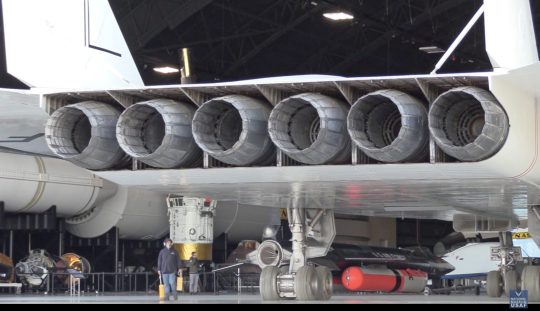
A view of the six massive afterburners on the XB-70 Valkyrie as the aircraft is towed out of its display hangar temporarily for museum maintenance. (Photo: National Museum of the U.S. Air Force via YouTube)
Though only two XB-70s were ever built, their legacy endures: the aircraft’s pioneering advancements in aerodynamics, engine performance, and high-speed flight helped shape the future of supersonic aviation.
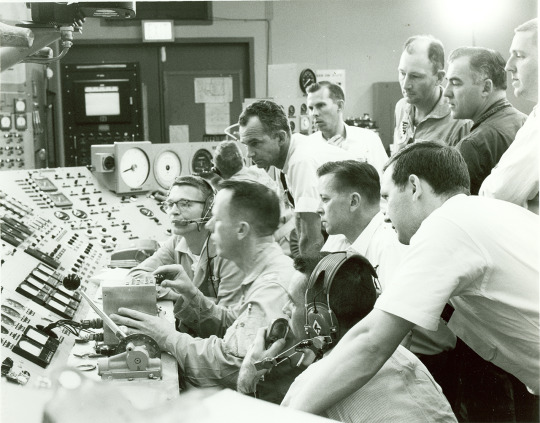
Pilots who were to perform the first test flights for the XB-70 Valkyrie operate the YJ93 engine, the powerplant of the XB-70, while the engine is tested under simulated flight conditions in May 1964 in the Rocket Test Facility at Arnold Air Force Base, Tenn., headquarters of Arnold Engineering Development Complex. This was done to help the pilots familiarize themselves with the performance characteristics of the engine prior to the first XB-70 flight, which occurred on Sept. 21, 1964. Beginning in the late 1950s and continuing through the mid-1960s, tests were conducted at Arnold AFB in support of the XB-70 program. Only two Valkyries were built, with only one of the pair remaining. (U.S. Air Force photo)
The first prototype made a total of 83 flights, amassing 160 hours and 16 minutes of flight time, while the second prototype completed 46 flights, totaling 92 hours and 22 minutes.
The XB-70 Valkyrie, with its daring design and groundbreaking capabilities, continues to captivate aviation enthusiasts and engineers. Its story, though short-lived in terms of operational use, highlights the relentless pursuit of innovation that defines the U.S. Air Force and its engineering partners. Sixty years after its first flight, the Valkyrie remains an iconic symbol of the bold ambitions of Cold War-era aviation.
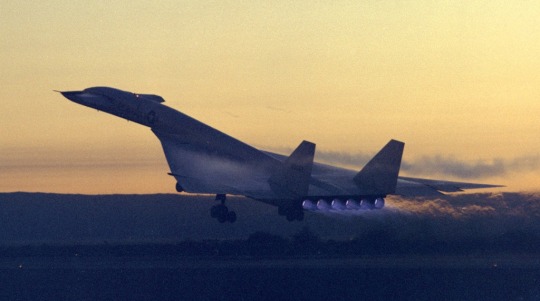
XB-70 Night Take-off. (Photo via Air Force Materiel Command History Office)
About David Cenciotti
David Cenciotti is a journalist based in Rome, Italy. He is the Founder and Editor of “The Aviationist”, one of the world’s most famous and read military aviation blogs. Since 1996, he has written for major worldwide magazines, including Air Forces Monthly, Combat Aircraft, and many others, covering aviation, defense, war, industry, intelligence, crime and cyberwar. He has reported from the U.S., Europe, Australia and Syria, and flown several combat planes with different air forces. He is a former 2nd Lt. of the Italian Air Force, a private pilot and a graduate in Computer Engineering. He has written five books and contributed to many more ones.
@TheAviationist.com
118 notes
·
View notes
Text
The Bell UH-1H Iroquois, known as the "Huey," is a legendary helicopter celebrated for its versatility, reliability, and iconic role in military and civilian missions. Explore this design on Redbubble!
Visit product >>>>
#BellUH1H, #Huey, #Helicopter, #MilitaryAviation, #AviationHistory, #Versatility, #AviationEnthusiast, #TroopTransport, #MedicalEvacuation, #IconicAircraft, #VietnamWar, #CombatHelicopter, #HelicopterPilot, #AviationLovers, #BellHelicopter
c
#Bell UH-1H#Huey#Helicopter#Military Aviation#Aviation History#Versatility#Aviation Enthusiast#Troop Transport#Medical Evacuation#Iconic Aircraft#Vietnam War#Combat Helicopter#Helicopter Pilot#Aviation Lovers#Bell Helicopter#Pilot#Military
6 notes
·
View notes
Text
The Lucky Bachelor
Part 1 - Luke Hughes X Reader
Masterlist Link
a:n When you guys' finish let me know if you want a part 2. I'm a little conflicted because I feel like I can't write as good for Luke as I do Jack. Idk why when I'm literally gonna marry this man but whatever. Enjoy!!

Summary: This is their second chance at love, it had been three years since that night in Michigan, three years since they officially split for the better. With some unwanted help Luke knows he will find a way to make her love him again.
Word Count 6401
Y/n’s POV
Y/N inhaled deeply, the distinct aroma of stale coffee and the acrid scent of cleaning products assaulting her senses as she stepped into the bustling airport terminal.
The rhythmic whirring of the wheels on her carry-on luggage provided a muffled counterpoint to the cacophony of voices echoing off the high ceilings and the distant hum of aircraft engines.
As she pushed through the throng of hurried travelers, her eyes darted from sign to screen, searching for the gate information for her flight. Suddenly, the overhead intercom crackled to life, a tinny, robotic voice cutting through the din.
"Good afternoon, passengers. This is the pre-boarding announcement for flight 89B to Rome. We are now inviting those passengers with small children, and any passengers requiring special assistance, to begin boarding at this time." The announcement was punctuated by a sharp, piercing ding that drew the attention of those waiting nearby.
Amidst the sea of harried bodies, a familiar figure suddenly caught Y/N's eye. Clarke, the bride-to-be and her best friend since childhood, stood near the crowded check-in counter.
Her blonde hair cascaded down her back in soft waves, the airport's harsh lighting lending an almost ethereal glow to the strands. Clarke was practically bouncing on her toes, her smile radiant with pure joy as she waved enthusiastically, beckoning Y/N over.
"Over here!" Clarke squealed, her voice carrying above the din of the busy airport. She cupped her hands around her mouth, ensuring that her words reached Y/N's ears.
For a moment, the nervousness that had been coiling in Y/N's stomach dissipated, replaced by a warm sense of affection. The nerves that had been twisting in her stomach moments ago melted away, replaced by a comforting warmth that spread through her chest.
She quickened her pace, dodging luggage and weaving through the crowd with newfound energy until she reached the circle of familiar faces.
"Sorry, excuse me," Y/N muttered apologetically as she squeezed past a family of tourists, their curious glances following her as she made her way towards her friends.
The moment Y/N stepped into the group, Clarke's eyes lit up, her face splitting into an ecstatic grin. "Y/N! You made it!" she squealed, her voice rising an octave in excitement. Without hesitation, Clarke flung her arms around Y/N, enveloping her in a tight hug that smelled earthy and green.
Y/N laughed, the sound bubbling up from her chest as she returned the embrace, squeezing Clarke tightly. The two friends held each other for a moment, the chaos of the airport fading into the background as they savored the reunion.
"I wouldn't miss it for the world," Y/N declared, her voice filled with sincerity as she pulled back to look her best friend in the eye. "You and Damien deserve the best celebration."
At the mention of her fiancé's name, Clarke's cheeks flushed with a delicate hue, a blend of happiness and bashfulness coloring her features. "Thank you, Y/N," she said softly, her eyes glistening with gratitude. "It means the world to me that you're here."
Clarke took a deep breath, composing herself before turning to the rest of the group with a radiant smile. "Come say hi to everyone else," she urged, tugging Y/N's hand and leading her towards the other bridesmaids.
As Y/N greeted each of the girls with warm, enthusiastic hugs, the chatter among the group grew louder. But as her gaze swept across the familiar faces, it landed on a newcomer, a girl she had never seen before.
The stranger stood slightly apart from the rest, her fiery red hair cascading down her back in vivid, rebellious curls.
Her piercing green eyes seemed to hold a glint of something mysterious, an undercurrent of intensity that made Y/N pause for a moment, her heart skipping a beat.
Brushing off the strange, unsettling feeling that crept up her spine, Y/N approached the girl with a friendly smile etched onto her features. "Hi there," she said, extending her hand in greeting. "I don't think we've met before. I'm Y/N, Clarke's childhood friend."
The redhead's lips curved into a smile that didn't quite reach her eyes, a guarded expression that immediately put Y/N on edge. "Anastasia," she replied, her voice smooth and measured as she grasped Y/N's outstretched hand. "It's a pleasure to meet you."
Despite the polite exchange, Y/N couldn't shake the odd, prickling sensation that settled in the pit of her stomach. There was something about Anastasia, something indescribable, that felt off - a subtle tension that hung in the air between them, thick and suffocating.
But before Y/N could dwell on it further, Clarke appeared by their side, her face lit up with excitement, effectively shattering the moment.
"Y/N, I see you've met Anastasia," Clarke beamed, placing a hand on each of their shoulders, forming a bridge between the two women. "She's a close work friend from my new job. I've been dying for you two to meet!"
Y/N forced a smile, the muscles in her face straining with the effort as she tried to push down the unease that threatened to surface. "That's great," she replied, her voice sounding a bit too chipper even to her own ears. "I'm always happy to meet Clarke's friends. As you can tell we're all thick as thieves now."
Anastasia's piercing gaze flickered between Y/N and Clarke, a flash of something indecipherable crossing her features before it was quickly replaced by a warm, almost saccharine smile.
"Clarke has told me so much about you, Y/N," she said, her tone honey-sweet and dripping with false sincerity. "I feel like I already know you."
Y/N let out a strained laugh, the sound grating against her own ears. "All good things, I hope," she joked, trying in vain to lighten the suddenly palpable tension.
Clarke giggled, her hand giving Y/N's shoulder a brief, reassuring squeeze, seemingly oblivious to the undercurrent of unease swirling between the two women.
…
All too quickly, the girls began navigating through the bustling airport, checking in their luggage and making their way through the winding security checkpoints, Y/N found herself easily falling back into step with their giddy chatter.
Taylor, one of Clarke's college friends, let out a giggle as she recounted her latest romantic escapade.
"Me and Travis aren't together anymore. He was too clingy," she said with a dramatic sigh, her eyes twinkling with mischief. "Maybe I'll steal up one of the best men, huh, Clarke?"
Clarke rolled her eyes playfully, a knowing smile tugging at her lips. Taylor was always like this, falling in love too quickly and falling out of it just as fast. Her romantic aspirations were as fleeting as the summer breeze, but her infectious laughter and carefree spirit made her an essential part of their tight-knit group.
The conversation shifted to the upcoming bachelorette party as they made their way to the boarding gate. Clarke's eyes sparkled as she described the home they'd be staying at, her hands gesturing animatedly as she painted a vivid picture of pristine white sand and crystal-clear waters.
"I found it a couple of months ago," she explained, her voice brimming with excitement. "It's a little expensive, but I feel like this week will be worth it."
Y/N listened intently, absorbing every word as Clarke waxed poetic about the luxurious amenities and breathtaking views. She could almost feel the warm sand beneath her feet, the salty breeze caressing her skin, and the laughter of her friends echoing through the night.
The intercom crackled to life, a pleasant voice filling the air. "Attention passengers, this is the final boarding call for Flight 227 to Bali. Please make your way to Gate 12. Thank you."
The announcement sent a ripple of excitement through the group, signaling for them to gather their belongings.
The girls fell into a single file line, stepping onto the plane and entering the luxurious first-class cabin that welcomed them with plush seats and gleaming surfaces.
Just as Y/N was settling into her seat, a familiar name caught her attention, causing her heart to skip a beat. "I can't wait to see Luke," one of the girls gushed, her voice taking on a dreamy quality.
It was Anastasia.
"He's such a dreamboat, Emilia, don't you think? Have you seen his arms?" she giggled.
Y/N felt a chill run down her spine, her grip tightening on the handle of her carry-on. She glanced up, only to find Clarke’s eyes already fixed on her, a mixture of guilt and concern etched across her face before she forced a toothy smile. For a moment, they simply stared at each other, a silent conversation passing between them.
Y/N swallowed hard, her throat suddenly dry. She'd known this moment would come, the day she’d see Luke again. But hearing his name spoken so casually, as if he were just another guest and not the boy who had once held her heart in his hands, made it all too real.
It was Clarke who broke the eye contact first, her smile faltering. She cleared her throat, breaking the tension. "We should probably find our seats," she suggested, her voice strained.
Y/N nodded, grateful for the escape. She followed the group onto the plane, her mind reeling with thoughts of Luke and the memories they'd shared.
Once they settled into their seats, Clarke turned to Y/N, her face contorted with guilt. "I was gonna tell you," she screeched, her hands clasped together as if in prayer. "Please don't be mad, Damien and Luke have gotten so close it would be rude not to invite him."
Y/N sighed, leaning back against the headrest. She couldn't blame Clarke for inviting Luke. After all, he was part of their shared history, a friend to both the bride and groom.
But the knowledge that he would be there, that she'd have to face him after all this time, sent a wave of anxiety crashing over her.
"I'm not mad, I promise," she said, the tightness in her jaw betraying her calm tone as she forced a smile. "It's just... complicated. I haven't seen him in a long time, so maybe this can be a good thing."
Clarke reached over, tentatively squeezing Y/N's hand. "I know," she murmured, her brow furrowed with concern.
"You guys are older now and have most of life figured out. Maybe you guys can be friends again? Get some closure."
Y/N nodded stiffly, her gaze trained straight ahead. The past had a way of clinging to her, of resurfacing when she least expected it. And with Luke, there was so much left unsaid, so many questions left unanswered that made her chest tighten.
Anastasia plopped down into the open seat next to her, a twist of fate that made Y/N's heart skip a beat. The redhead offered her a sidelong glance, a smirk playing at the corners of her mouth.
"Looks like we'll be getting to know each other quite well on this trip," Anastasia remarked, her voice low and conspiratorial.
Y/N swallowed hard, the muscles in her neck tensing as she nodded in agreement. Little did she know, Anastasia's words held a weight that would soon become all too clear.
…
Luke’s POV
Luke stepped off the plane, the warm island breeze caressing his face and tousling his chestnut hair. The salty scent of the ocean filled his nostrils, mingling with the faint aroma of sunscreen and tropical flowers.
He paused for a moment, taking it all in, the exotic smells washing over him and easing the tension in his shoulders.
Adjusting the strap of his backpack, Luke scanned the crowded airport, his eyes searching for familiar faces amidst the sea of tourists and locals.
A flash of recognition caught his attention, and he spotted his friends gathered near the baggage claim, their laughter and animated conversations rising above the din of the busy terminal.
A grin spread across his face as he made his way towards them, a mixture of excitement and a touch of nerves fluttering in his chest. "Hey, guys!" he called out, his voice carrying a hint of his trademark dorky charm.
Luke was excited to see his old friends again. His friends turned to greet him, their faces lit up with genuine smiles and enthusiastic handshakes.
They fell into an easy banter, discussing the itinerary for the joint bachelor party and good-naturedly teasing the groom-to-be about his upcoming nuptials.
Luke joined in the lively conversation, laughing and joking along with the others. But even as he participated, he couldn't quite shake the twinge of apprehension that gnawed at the back of his mind.
Y/N would be here, on this very island, and the thought of seeing her again after all this time sent a shiver down his spine.
"Hey, Luke, you planning on sweeping any of the local ladies off their feet this weekend?" one of his friends, Jared, elbowed him playfully.
Luke chuckled, trying to mask the underlying tension. "Nah, man, I'm here to support the groom, not to cause any trouble."
Another friend, Ethan, piped up. "Yeah, right. Like we don't all remember how you used to be the ultimate ladies' man back in the day."
"That was a lifetime ago," Luke shrugged, the ghost of a smile playing on his lips. In truth, his mind was elsewhere, still consumed by the thought of reuniting with Y/N.
He could still vividly remember the way her eyes sparkled when she laughed, the softness of her skin under his fingertips, and the soothing way her voice could calm his worries.
Their fairy tale romance had been cut short by the demands of his burgeoning NHL career, the distance and the pressure ultimately proving too much for their relationship to withstand.
The breakup had been painful, a raw wound that had never fully healed. In the aftermath, they had lost touch, each of them focusing on their own lives and careers, trying to move forward without the other.
Now, as Luke prepared to see Y/N again, he found himself grappling with a whirlwind of emotions.
Would she still be the same girl he had fallen for all those years ago? Would the connection between them still be there, simmering beneath the surface? The uncertainty only served to heighten the nervous anxiety bubbling in his chest.
…
After three hours of painful silence on the plane, they finally made It back to the ground. y/n felt like she could finally breathe again as the fresh air hit her face. She was almost too grateful to be more than a few feet away from Anastasia.
Clarke led the way to the car rental counter, all seemed well until Anastasia suddenly let out an exasperated sigh. "Ugh, it looks like there's been some kind of mix-up with our reservation," she groaned, her brow furrowed in frustration.
Clarke's eyes went wide. "What do you mean? I double-checked everything before we left!" she exclaimed, her voice tinged with worry.
Anastasia shot Y/N a pointed look. "Well, maybe if someone hadn't been so distracted, we wouldn't be in this mess," she huffed, her tone dripping with condescension.
Y/N felt her cheeks flush with embarrassment and confusion. "What are you talking about? I haven't done anything," she protested, her hands raised in a placating gesture.
The redhead rolled her eyes dramatically. "Oh, please. Don't play innocent with me. I saw the way you were eyeing the baggage carousel, completely oblivious to everything else around you."
"Woah relax!" Y/N exclaimed, her voice rising in pitch. "I was just looking around, making sure I didn't miss our luggage. There's no need to make this into a big deal, I mean what exactly is this mess-up you’re talking about."
Anastasia scoffed, crossing her arms over her chest. "Well, it is a big deal when your carelessness jeopardizes our entire trip. Now we're going to have to waste time sorting this out instead of enjoying ourselves."
Clarke stepped in, placing a hand on Anastasia's shoulder in an attempt to defuse the situation. "Let's all just take a deep breath, okay? I'm sure we can figure this out," she said in a soothing tone, casting an apologetic glance in Y/N's direction.
Y/N felt her heart racing, she wanted nothing more than to escape the confrontation, to retreat to a quiet corner and gather her thoughts. But Anastasia's accusatory gaze kept her rooted to the spot, her pride and sense of fairness refusing to back down.
"I'm not the one who caused this problem, Anastasia," Y/N insisted, her voice laced with a hint of steel. "If you'd just calm down and let the rental agent handle it, I'm sure we can get this sorted out."
The redhead's eyes narrowed, and for a moment, Y/N could have sworn she saw a spark of genuine malice in their depths. "Oh, I'm perfectly calm," Anastasia purred, her lips curling into a sardonic smile. "I'm just not going to let anyone ruin this trip for me. Especially not you."
After several tense minutes of negotiating with the rental agent, Clarke finally emerged with a set of keys, a strained smile on her face.
"Okay, everyone," she called out, waving the group over. "We got it all sorted out. Let's head to the car and get this show on the road!"
The girls filed towards the waiting vehicle, each one casting wary glances at Anastasia, who seemed to be in an especially foul mood. As Y/N reached for the handle of the front passenger door, the redhead suddenly pulled it open and slid into the seat, an triumphant smirk on her face.
Y/N froze, unsure if Anastasia was being serious. For a moment, she considered putting up a fight, asserting her rightful place in the front. But the odds already felt stacked against her, and she didn't want to risk escalating the situation further.
Letting out a resigned sigh, Y/N settled into the backseat, squeezing in next to Taylor. The brunette shot her an apologetic look, mouthing a silent "I don’t know what her deal is" as she placed a comforting hand on Y/N's arm.
…
The car pulled up to the beachfront property, and Y/N felt her breath catch in her throat. The house was stunning, a perfect blend of modern architecture and tropical charm, nestled on a secluded stretch of pristine white sand.
The sound of waves crashing against the shore filled her ears, a soothing melody that did little to calm the butterflies fluttering restlessly in her stomach.
Y/N hung back, taking a moment to gather her composure while the girls tumbled out of the car. She watched as her friends eagerly grabbed their bags from the trunk, their faces aglow with the glow of the setting sun.
The last time she had been in this paradise-like setting, she had been with Luke, their young love blossoming amidst the sun-drenched days and moonlit nights. Now, the prospect of seeing him again after all these years sent a shiver of both trepidation and longing through her.
Emilia turned and noticed Y/N lingering behind. "Y/N! Are you coming inside?" she called out, her voice brimming with excitement.
Y/N mustered a small smile and nodded. "Yeah, I'll be there in a minute," she replied, her voice betraying a hint of the turmoil she felt. "I just... need a moment."
Emilia returned the smile and nodded in understanding before disappearing through the doorway, leaving Y/N to collect her thoughts. Steeling herself, Y/N reached for her suitcase and followed the group inside.
Exhaling a shaky breath, Y/N pushed open the car door and stepped out, embracing the warm, salty breeze that swept across the secluded beachfront property.
She was the last one to leave the vehicle, her luggage trailing behind her as she crossed the threshold, the car door clicking shut softly behind her - a subtle finality that seemed to seal her fate.
The walk to the kitchen felt like an eternity, each step a battle against the nerves that she couldn’t seem to shake off. Her heart pounded in her ears, a deafening rhythm that drowned out the chatter and laughter of her friends. She forced a smile onto her face, waving to Damien and his groomsmen as she entered the room, her eyes scanning the space almost involuntarily.
And then, as if by some magnetic force, her gaze landed on Luke.
Time seemed to slow to a crawl as their eyes met, their gazes locking in a moment that was both thrilling and terrifying. This was it, the moment she had both anticipated and dreaded, the chance to confront the past she had spent years trying to outrun.
He was leaning against the kitchen island, his tall frame exuding an air of effortless confidence. The years had been kind to him, sculpting his features into a breathtaking work of art. His chestnut hair was tousled, as if he had just run his fingers through it, and his eyes, those deep pools of brown that had once held her captive, sparkled with mirth as he laughed at something one of the guys had said.
He looked like he had just stepped out of a magazine shoot, a perfect specimen of masculine beauty. Y/N felt her breath hitch, her heart skipping a beat as she drank in the sight of him. It was as if no time had passed at all, as if they were still those love-struck teenagers, stealing glances at each other across a crowded classroom.
Luke's expression shifted from surprise to a tentative smile, and Y/N felt her heart flutter, the familiar pull of their connection tugging at her very soul. She took a step forward, compelled by an invisible thread that bound them together, but the sound of Anastasia's voice piercing the charged silence shattered the moment, yanking Y/N back to reality.
"Y/N! There you are," the redhead chirped, her tone sugary sweet as she sidled up to Y/N, a possessive hand resting on her arm. "We were just about to start mixing cocktails. Care to join us?" Y/N tore her gaze away.
"Uh, yeah, sure. I'd love to help," Y/N managed, her voice betraying a hint of her nerves. She moved to the counter, her fingers fumbling as she tried to focus on the task at hand.
She could feel Luke's presence, even without looking at him, a palpable energy that crackled and sizzled in the space between them. It was going to be a long week, a test of her resolve and her ability to keep her heart in check.
With one last glance in Luke's direction, Y/N turned away.
…
Y/N plastered on a smile, pushing down the turmoil raging within as she joined the girls in the kitchen, their lively chatter and laughter a sharp contrast to the palpable tension coursing through her veins.
"Ah, there's our girl!" Anastasia crooned, draping a possessive arm around Y/N's shoulders and guiding her to the makeshift bar. "We were just about to start mixing some cocktails."
Y/N hesitated for a moment, her gaze flickering towards the living room, where the groomsmen - including Luke - had gathered. She could feel his eyes on her, a pull so powerful it was as if he were a planet and she, a helpless moon in his gravitational field.
"Hey, Luke, looks like your old flame is getting her flirt on," Jared teased, elbowing the other man playfully.
Luke felt a flash of something akin to jealousy surge through him, but he quickly tamped it down, offering a casual shrug. "It's been a long time. I'm sure she's just being friendly."
Ethan chuckled, a devious grin spreading across his face. "Friendly, huh? Well, in that case, maybe one of us should go over there and help her out. You know, show her a real good time."
The group erupted in a chorus of laughter, their eyes trained on the girls as they moved around the kitchen, their movements graceful and flirtatious. She could feel the weight of their gazes, and she fought the urge to squirm under the scrutiny.
Anastasia, on the other hand, seemed to thrive on the attention, her hips swaying in a way that Y/N couldn't help but find a bit over-the-top.
Y/N felt a subtle unease creep up her spine as Anastasia's flirtatious behavior escalated, the redhead's touches and innuendos growing increasingly blatant. Trying to divert Anastasia's attention, Y/N turned to the other girls, forcing a smile onto her face.
"So ladies, how are you two planning to spend tonight?" she asked, silently pleading for backup.
Taylor grinned and leaned in conspiratorially. “I plan to spend it drunk, maybe some skinny dipping on the beach.” she winked.
Clarke, ever the diplomatic peacekeeper, stepped in, placing a hand on Anastasia's arm. "Alright, ladies, let's not hog all the fun. I'm sure the boys are getting thirsty over there." She flashed them a playful wink, her gaze shifting to Y/N, a silent message of reassurance passing between them.
"Oh, don't worry, Clarke. I'm sure the boys can entertain themselves for a while." She cast a pointed glance towards the living room, her lips curving into a coy smile. "After all, we girls need to have a little fun of our own, don't we, Y/N?" Anastasia's smooth, saccharine voice cut through the chatter.
Y/N felt her stomach twist with discomfort, the charged undercurrent in Anastasia's words raising all sorts of warning bells in her mind. Mustering a tight-lipped smile, she nodded, her eyes silently pleading with the other girls to steer the conversation in a different direction.
…
The initial excitement of the group's arrival had settled down, and the friends naturally split off into smaller clusters, catching up and exploring the luxurious beach house.
Luke stayed in the kitchen fighting with himself on what he should do. ‘Do I go to her?’ He thought to himself. ‘Can I mend three years of silence in a week?’
Caught up in the moment, Luke found himself gravitating towards the living room without another thought, muttering a 'fuck it' as his feet moved of their own accord.
It was as if he were being drawn to her, like a moth to a flame. He paused just a few feet away, clearing his throat tentatively. She was so lost in thought, her gaze fixed on the hypnotic rhythm of the ocean, that she didn't hear his approaching footsteps until his voice broke through her reverie.
"It's good to see you again," he said, his voice low and warm.
Y/N turned, her heart leaping into her throat as she came face to face with Luke. Up close, he was even more striking, his features sharper and more defined than she remembered.
"Luke," she breathed, his name feeling both foreign and familiar on her tongue. "Yeah, it is good to see you. It's been a while."
He smiled, a lopsided grin that sent a flutter of excitement through her chest. "Two years, give or take," he said softly, his gaze never leaving hers. "You look... amazing by the way."
Y/N felt a blush creep up her neck, a warmth that had nothing to do with the tropical climate. "Thanks," she managed to choke out. "You look better, happier..."
There was a beat of silence as they drank in each other's presence, the weight of the years that had passed palpable between them.
Y/N's mind raced, desperately searching for the right words, the perfect way to bridge the gap that had grown. There was so much she wanted to say, so many questions she longed to ask, but the words seemed to catch in her throat, trapped behind the turbulent surge of emotions.
Luke, too, seemed to be grappling with his own thoughts, his brow furrowed slightly as he studied her face, as if trying to commit every detail to memory.
"I saw you play the other week, I'm happy things are working out for you," Y/N began, looking between his face and their friends running on the beach.
"You saw the game?" Luke questioned, his expression shifting to one of shock.
"I was there in person," she admitted, a faint smile playing on her lips.
"Wait, what...How come you didn't say hi?" he pressed, a hint of vulnerability creeping into his voice.
Y/N felt a flush of embarrassment creep up her neck. "I saw you with some girls, didn't want to interrupt," she confessed, her gaze dropping for a moment before meeting his eyes again.
Luke let out a soft chuckle, a teasing grin spreading across his face. "So you were stalking me, huh?" he teased.
The familiar banter brought a smile to Y/N's face, the tension easing ever so slightly. "I was just watching, sugar," she murmured, the endearment slipping out before she could stop herself.
The moment the words left her lips, Y/N felt a wave of mortification wash over her. She hadn't used that name in three years, and one casual encounter with Luke had her mind instantly reverting to the intimacy of their past. Biting her lip, she averted her gaze, silently willing the ground to open up and swallow her.
Luke, however, seemed to revel in the familiar moniker, his expression softening as a hint of nostalgia flickered across his features.
"It's good to hear you say that again," he admitted quietly, his hand reaching out to gently brush against hers, a spark of electricity crackling between them at the fleeting touch.
The spell was broken by the arrival of Damien, the groom-to-be, who drunkenly stumbled onto Luke, clapping him on the back and pulled him into a boisterous conversation with the group outside.
…
Fat raindrops pelted against the windows as a rumbling clap of thunder rolled overhead. Y/N stood under the covered porch, watching in amusement as the rest of the group made a mad dash from the beach toward the houses front door.
Taylor was bringing up the rear, squealing as the downpour quickly soaked through her thin t-shirt. She reached the porch last, bangs plastered to her forehead and mascara smudged under her eyes. Shivering, she flung open the door and stumbled inside, leaving a trail of wet footprints behind her.
Y/N chuckled and followed Taylor into the cozy entryway. The others were already shaking out their damp hair and peeling off soaked outer layers.
Taylor pouted as a few stray droplets rolled down her neck, then broke into a impish grin. She extended her arms out to her sides, approaching Y/N.
"Don't you dare!" Y/N warned with a laugh, backing away. Her heel caught on a throw rug and she pitched backward, eyes squeezing shut in anticipation of the hard floor.
Instead, a pair of strong arms encircled her waist, catching her against a firm chest. Y/N's eyes fluttered open to find Luke's concerned gaze inches from her own.
His rain-drenched curls were flattened against his forehead and rivulets of water trailed down his chiseled jawline. His chest heaved as he caught his breath from running inside to escape the downpour.
"Whoa there, you okay?" His warm breath fanned across her cheeks. Up close, Y/N caught the scent of his cologne mingling with the fresh, earthy smells of the rainstorm.
Taylor failed to smother a giggle, shaking out her wet hair like a dog. "I think someone could use a towel."
Luke kept his arm looped protectively around Y/N's waist as he shot Taylor a playful glare. "Yeah, if someone hadn't tried drenching her with a bear hug."
Y/N felt her cheeks growing warm as Luke kept his arm looped around her waist, holding her body flush against his. His taut abdomen pressed into her back, and she was hyper-aware of his warm breath fanning across her neck. Y/N forced a laugh. "Exactly, it's all your fault."
"What's with all the racket?" Damien emerged from one of the doorways, tousling his wild, disheveled hair. He smirked at the intimate way Luke was embracing Y/N. "Oh brother, would you two just screw already and get it over with!"
Y/N's eyes went wide at Damien's crude joke, but Luke just chuckled lowly. His thumb stroked an absent-minded circle into her hipbone, sending a shiver down her spine.
"You staying up for a bit?" Luke asked in a low rumble, realizing he still had Y/N enveloped in his arms. "Not tired, Lukey?" She teased back, relaxing against his solid frame.
Luke's chocolate eyes danced with amusement. "I was tired until I saw you again. I think we have some catching up to do." He flashed her a bright, lopsided smile that made her knees go weak.
…
Taking her hand, Luke led Y/N away from the others down a hallway, throwing a roguish wink over his shoulder at Damien before disappearing around the corner. She held her breath while Luke led her into the sunroom.
It was the epitome of cozy comfort - golden lamps bathed the space in a warm glow, and the large spare bed was piled high with plush blankets and pillows.
Luke started moving towards the inviting bed, but Y/N quickly arched one leg out to block his path. "Ah ah, your shirt is still drenched. You can't get on the bed like that."
He flashed her a roguish grin before grasping the hem of his t-shirt and tugging it smoothly up and over his head in one fluid motion.
Y/N's eyes widened as his toned torso and chiseled abs were revealed. He tossed the soaked shirt aside carelessly and settled onto the bed, leaving a respectable distance between them.
Y/N instantly regretted speaking up. She couldn't believe the casual, unhesitating way he had stripped off his shirt right in front of her, as if they were still intimately involved.
A flush crept up her neck as memories flooded back of when they were dating - she had been an awestruck teenager, hungrily drinking in every newly exposed inch of his body as they learned each other.
Now she was the flustered one, feeling like that bashful girl again as she took in the sight of his muscular build, the breadth of his shoulders tapering down to those abs she used to love tracing with her fingertips...
Y/N swallowed hard as Luke reclined back on the plush bed, muscles rippling underneath tanned skin. He propped himself up on one elbow, giving her an unobstructed view of his chiseled torso and abs.
"See something you like?" Luke's voice was a deep rumble, vibrating straight through Y/N. He arched one brow cockily, the corner of his lips curling into that trademark.
Heat bloomed across Y/N's cheeks as memories of their past intimacies flooded her mind. She averted her gaze, trying to regain her composure. "Don't flatter yourself."
Luke tsked, shaking his head slowly. "Now, now. No need to be shy, gorgeous." He patted the space next to him invitingly. "Why don't you come join me? We have years of catching up to do."
Y/N's pulse fluttered wildly as she wavered, torn between the warmth pooling in her belly and her lingering hurt over how things had ended with Luke. Throwing caution to the wind, she settled gingerly on the edge of the bed, back ramrod straight.
"Relax." Luke's fingertips ghosted along her arm, raising goosebumps. "You're so tense. Come here. Let me help you with that..."
His hands found her shoulders, kneading the tight muscles there with strong strokes. Y/N stifled a moan, hating how easily he could still unravel her with his touch alone. She felt him shift closer until his bare chest was a hair's breadth away, the heat radiating off him in waves.
"There, that's better," Luke purred in her ear, his mouth so close she could feel the whisper of his lips against her skin. "Now, why don't you tell me everything I've missed?"
Y/N shivered at the feel of Luke's breath fanning warmly against her neck. She forced herself to remain still, not wanting to give him the satisfaction of knowing how flustered he made her.
"So," she began, proud that her voice came out stronger than she felt. "Where should we start?”
Y/N stifled a moan as Luke's strong hands kneaded the tense muscles of her shoulders and upper back. She cursed the traitorous shiver that rippled through her at the feeling of his bare chest brushing against her arm.
She had to gather her wits, made difficult by the intoxicating combination of his heated touch and masculine musk surrounding her. "Well, I finally moved out of that cramped apartment into an actual house back in Michigan."
"A home all to yourself?" Luke's hands stilled momentarily, drawing her gaze to the admiring look smoldering in his eyes. "I'm impressed”
His fingertips trailed scorching paths down her arms as he resettled behind her, the solid wall of his chest pressing against her back once more. Y/N bit her lip against the fresh wave of arousal cresting through her.
She pressed on, “anyway the job has been great. Challenging but great. Though I did have a boyfriend for a while in the midst of everything..."
The words had an immediate effect on Luke. His jaw tightened perceptibly and his eyes flashed dangerously, like a wolf catching the scent of a threat. "A boyfriend, huh?" His voice was low and controlled, but Y/N could hear the undercurrent of primal possessiveness.
She nodded, holding his intense gaze. "Yeah, we dated for several months after you...left."
Luke seemed to wrestle with reining in his reaction. When he spoke again, his tone was carefully measured. "I see. And what became of this...boyfriend?"
Y/N shrugged one shoulder casually, though her pulse was thundering in her ears. "It didn't work out. The passion wasn't really there, at least not on my end."
Luke tsked again, making that infuriatingly sexy sound. At that, some of the tension drained from Luke's frame and a faint smirk played across his lips. "No passion, huh? Can't relate."
His fingers trailed up the side of her neck, sending sparks ricocheting across her sensitized skin. In one smooth motion, he reached out and cupped her jawline, thumb brushing her parted lips. His lips brushed the shell of her ear as he murmured, "I missed you every single day, you know."
"I want you back. However, I can have you." His calloused thumb stroked her lower lip as he inched closer, arousal darkening his eyes to a deep black. "Let me make up for lost time..."
…
Lmk what you think please! Part 2?
#luke hughes#nhl#new jersey devils#luke hughes x reader#luke hughes x you#luke hughes x y/n#luke hughes fic#luke hughes one shot#luke hughes smut#nhl x reader#nhl x you#nhl x y/n#nhl fic#nhl one shot#nhl smut#fluff#angst#masterlist#x reader#lh43#nj devils#luke hughes fanfiction#luke hughes imagine
266 notes
·
View notes